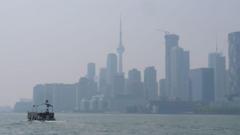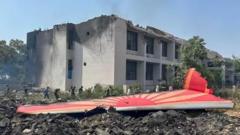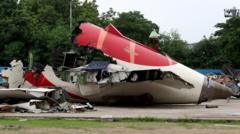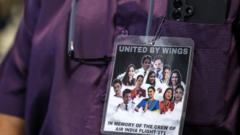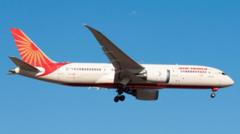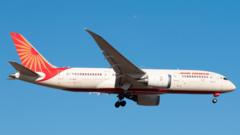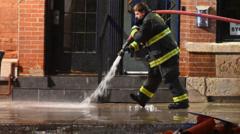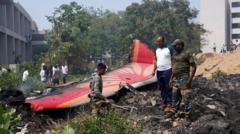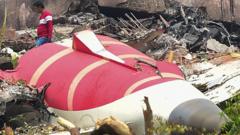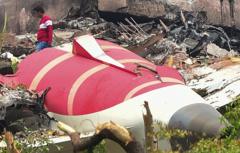### The incident highlights the importance of proper use of airplane facilities amid a growing conversation surrounding passenger etiquette.
# Air India Flight Returns to Chicago Due to Clogged Toilets

# Air India Flight Returns to Chicago Due to Clogged Toilets
## Discomfort for Passengers as Lavatories Filled with Unusual Waste
Air India experienced a significant disruption last week when one of its flights had to return to Chicago after multiple toilets became inoperable, resulting in discomfort for the 300 passengers onboard. The flight, which was en route to Delhi for a lengthy 14-hour journey, spent nearly two hours in the air before the decision to turn back was made.
Footage from the cabin revealed chaos as passengers gathered around the crew, seeking clarification on the unusual circumstances. The airline later confirmed that polythene bags, rags, and clothing were found obstructing the lavatory system. This incident has ignited a heated discussion across social media platforms, with many users sharing opinions on proper bathroom etiquette during flights.
Typically, airplane toilets utilize a vacuum system that stores waste in special containers, emptied only upon landing. While it’s not unheard of for toilets to become clogged, aviation expert Mark Martin stated that it is "next to impossible" for all lavatories to malfunction strictly due to passenger misuse, especially to the extent that it requires an emergency diversion.
According to Air India, the incident occurred on Flight 126 on March 5, but the official explanation was only released recently. The airline noted that other unusual items—such as blankets, underwear, and even diapers—have previously been discovered in their toilets. The statement emphasized the necessity for passengers to utilize lavatory facilities appropriately.
The airline reported that eight out of twelve toilets were rendered useless after crew members identified the obstruction in the plumbing. Images released show waste-filled bags and a drainage pipe jammed with rags, clearly illustrating the severity of the blockage.
Due to nighttime restrictions at several European airports, diverting the flight to another destination was not feasible, making the return to Chicago the only viable option. On arrival, passengers disembarked as planned and were provided accommodations to mitigate the inconvenience, with the airline officials noting that the diversion was made prioritizing passenger comfort and safety. Full refunds and rescheduled flights were offered to the affected passengers.
Responses on social media were mixed, with some users blaming Air India for inadequate maintenance and sanitation conditions onboard. Yet others defended the carrier, suggesting that passenger negligence could not entirely be laid at the airline's feet. This incident raises questions about shared responsibility in maintaining cleanliness during air travel.




